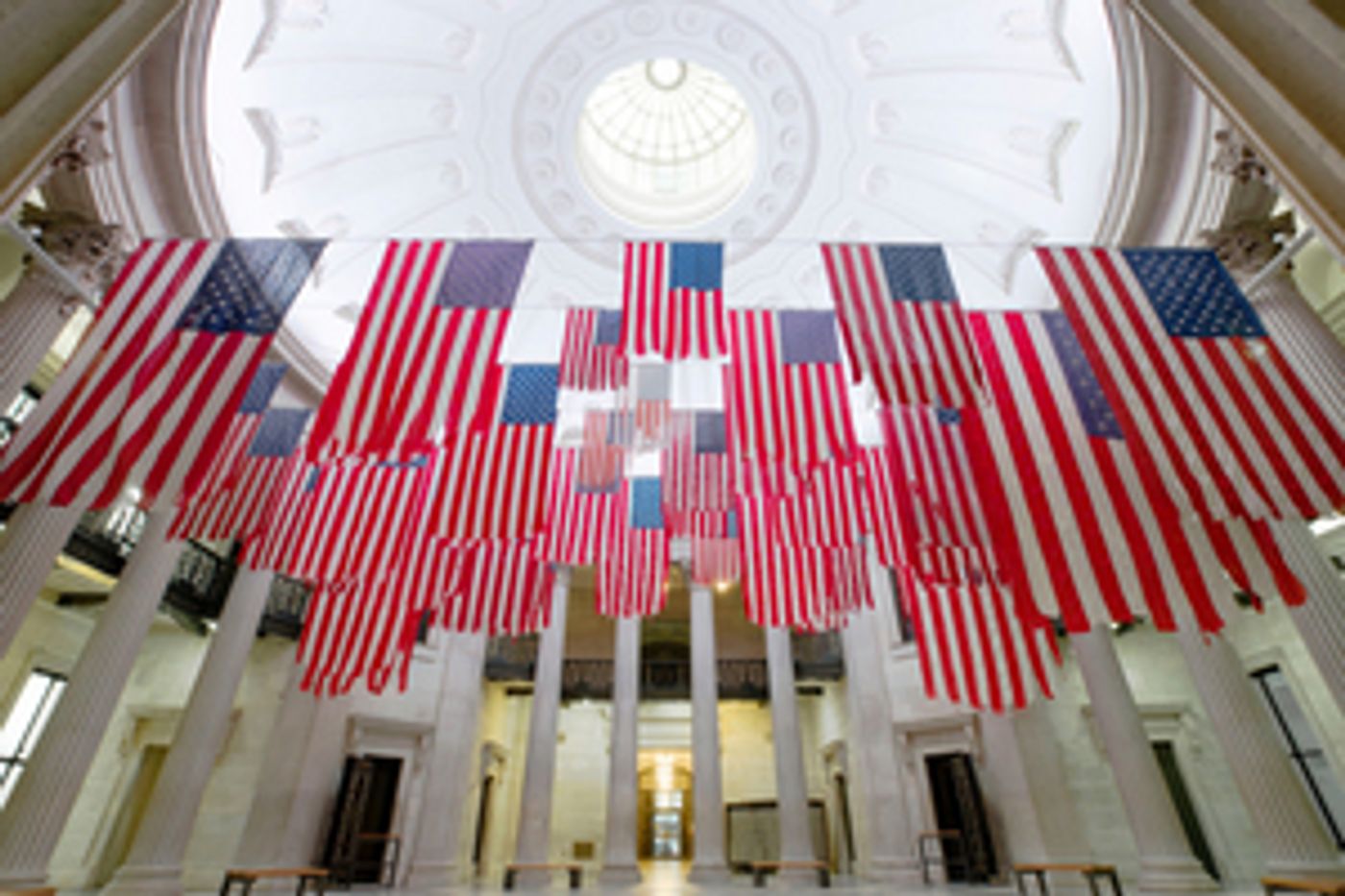The Frist Art Museum to Present MEL ZIEGLER: FLAG EXCHANGE

The Frist Art Museum presents Mel Ziegler: Flag Exchange, an installation of fifty American flags-one from each state-suspended row after row from the ceiling. The exhibition invites consideration of the American flag as a symbol of national identity and ideals, and it will be on view in the Frist's Upper-Level Galleries from March 13 through June 28, 2020.
Mel Ziegler (b. 1956), the Paul E. Shwab Chair of Fine Arts Professor at Vanderbilt University, is renowned as a social and community engagement artist whose work seeks to foster discourse and the sharing of ideas relating to history, politics, and society. He divides his time between Nashville and rural Nebraska, where he is the founder and executive director of the Sandhills Institute, a grassroots organization dedicated to civically engaged art, in part by connecting local ranchers and farmers with artists around the world.
During his travels across the United States, Ziegler frequently saw the American flag on display in front of schools, homes, small businesses, construction sites, or simply alongside the road. Many were in poor condition-often ragged, faded, or torn. "Mel was intrigued that these expressions of national pride were kept on view by people who either couldn't afford to replace them or in many cases hadn't noticed or cared whether theirs had gotten shabby," says Frist Art Museum Chief Curator Mark Scala. "And he wondered if their owners might be willing to trade theirs for a fresh new flag." So, from 2011 to 2016, in what Ziegler calls "inquisitive travels," he visited all fifty states, with a supply of American flags, and offered to replace old flags with new ones, renewing people's outdoor displays while acquiring the materials for the exhibition.
"Flag Exchange is simultaneously a physical installation, an expression of an idea, and a site for performance," says Scala. "The flags themselves symbolize a nation that has survived tumult and stress." Displayed in the gallery, the rows of flags create a dense spatial layering. "The effect is optically powerful, as the inherent beauty of the flags' patterns is intensified through repetition and the irregularity of the damaged cloth," says Scala.
Flag Exchange has been installed in large spaces, often surrounding or hanging behind a stage or podium. At the Frist, a stage will be part of the installation and may be used for speeches, readings, musical performances, and discussions about the relationship between people and their ideas of democracy. The overall experience is one in which the civic realm is reimagined in an atmosphere committed to the respectful exchange of viewpoints.
The symbolism of frayed and worn flags in Flag Exchange raises questions about the capacity of the American experiment to be sustained through national triumphs and shortcomings, including our own time of extreme political divisiveness. Ziegler writes that when he started acquiring the flags, "I could have never known what the political climate in the United States might be like today. It seems rather significant and pertinent that this project should help develop open, unpartisan dialogue at a moment when it seems to be needed most."
Throughout the process of gathering and showing the flags, Ziegler was careful to follow the dictates of the U.S. Flag Code regarding their proper handling and display. In thus demonstrating that respect for the flag should rise above partisanship, he hopes to inspire viewers to find common ground in the vision of indivisibility for which the flag stands.
"In the end, it is the act of collecting the flags-the openness and vulnerability of an artist who is keenly interested in interacting with people in all corners of the country-that will inspire the trust and enthusiasm of all participants as they work to find common ground in the meaning of the flag and the promise of the nation," says Scala.
Videos

